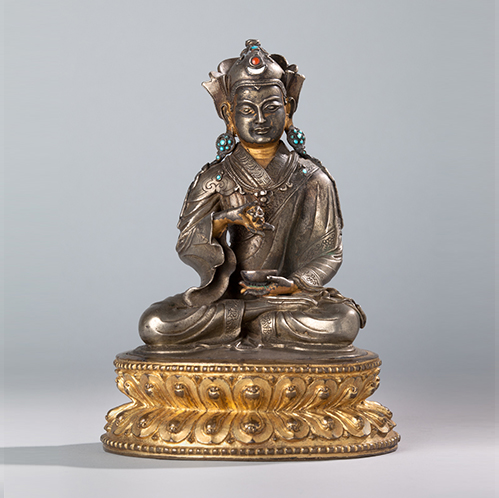
Theme: Ritual
Inspired by the great Tibetan Buddhist teacher Padmasambhava, Tracy Cochran discusses how rituals connect us to ancient traditions while illuminating our present moment.
About the Mindfulness Meditation Podcast
The Rubin Museum of Art presents a weekly meditation session led by a prominent meditation teacher from the New York area, with each session focusing on a specific work of art. This podcast is recorded in front of a live audience, and includes an opening talk, a 20-minute sitting session, and a closing discussion. The guided meditation begins at 20:00.
If you would like to attend Mindfulness Meditation sessions in person or learn more, please visit our website at RubinMuseum.org/meditation.
This program is supported in part by the Hemera Foundation with thanks to our presenting partners Sharon Salzberg, the Interdependence Project, and Parabola Magazine.


Related Artwork

Padmasambhava, “the lotus born,” an Indian teacher said to have been miraculously born in a lotus flower, is revered by all Tibetan Buddhist traditions. He is considered one of the founding teachers of Buddhism in Tibet, along with the scholar Shantarakshita; the Tibetan emperor Tri Songdetsen invited them both to his kingdom. Padmasambhava is credited with taming the forces opposed to Buddhism in Tibet, such as indigenous gods, which he transformed into Buddhist protectors. It is also said that Padmasambhava concealed his teachings, known as treasure teachings, throughout the Himalayan landscape to be discovered by foretold disciples at opportune times in the future.
Revered by Tibetans as the Second Buddha, Padmasambhava can be recognized by his lotus hat and elaborate dress, which combines secular, Tantric, and monastic elements (boots, long sleeves, and outer robe). This marvelous silver sculpture is rich in detail. From the felt collar of the innermost vest to the pointed cape visible only on the right shoulder to the wide flaring sleeves, each element has been finely and thoughtfully executed. Other particularly refined details include the necklace on top of the clothing and the knot-shaped braids on the shoulders. A light sway in the body adds a sense of immediacy to the image, and the inlays, paint, and golden base enliven it. As such this is an example of Tibetan metal craftsmanship at its best.
Padmasambhava guides his students on the path of knowledge and deep understanding, just as meditation is guided by ritual.
About the Speaker

Tracy Cochran is editorial director of Parabola, a quarterly magazine that for forty years has drawn on the world’s cultural and wisdom traditions to explore the questions that all humans share. She has been a student of meditation and spiritual practices for decades and teaches mindfulness meditation and mindful writing at New York Insight Meditation Center and throughout the greater New York area. In addition to Parabola, her writing has appeared in The New York Times, Psychology Today, O Magazine, New York Magazine, the Boston Review, and many other publications and anthologies. For more information please visit tracycochran.org.
